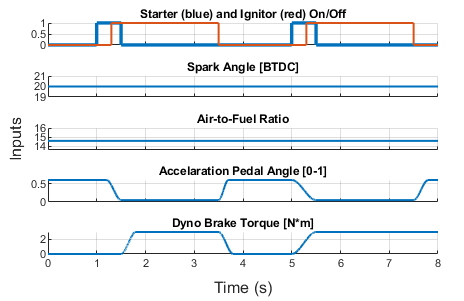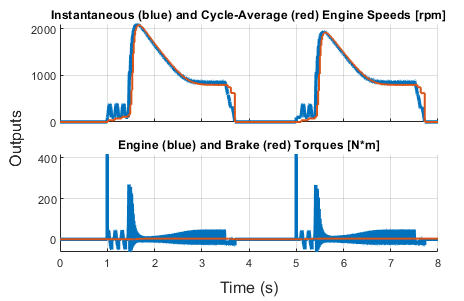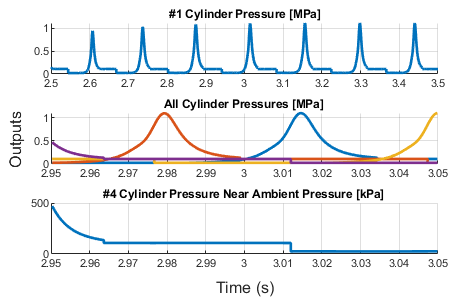Crank-Angle-Resolved Engine Model
This example shows a 2.0-liter, four-cylinder, naturally aspirated, spark-ignited, four-stroke engine which computes crank-angle-resolved instantaneous torque.
To start the engine from the rest, first a starter motor starts rotating the crank wheel, followed by fuel injection and spark ignition to start firing. When combustion produces more torque at the crank than the starter motor torque, one-way clutch (also called overruning clutch) in the starter prevents the transmission of torque from crank to starter. Once the crank gets enough rotational momentum from succsessive combustions, starter motor is turned off and engine continues to operate by injection and spark.
The engine torque can be controlled by varying throttle, air-fuel ratio, and spark timing.
Model

Simulation Results


